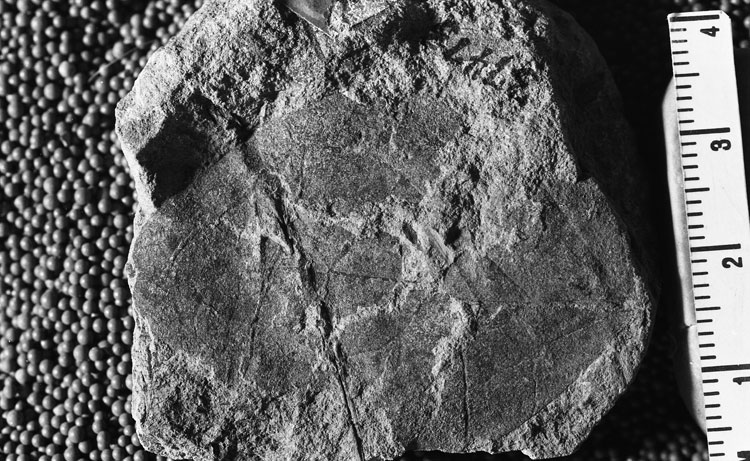Locality
From Hollick (1930) (p. 62-63)
"Port Moller, 2 miles up the canyon west from Mud Bay, Alaska Peninsula (original No. 35); collected by W. W. Atwood and H. M. Eakin in 1908 (lot 5187)."
Description
From Hollick (1930) (p. 62-63)
"Populus hyperborea Heer, Die Kreide-Flora der arctischen Zone: Flora fossilis arctica, vol. 3, No. 2, p. 106, pl. 27, fig. 8d; pl. 29, figs. 6, 7a, 8a, 9; pl. 30, fig. 2b, 1874; Die fossile Flora Gronlands, erster Theil: Idem, vol. 6, pt. 2, p. 64, pl. 17, figs. 6, 7; pl. 21, fig. la, 1882." (Heer 1874; 1882)
Remarks
From Hollick (1930) (p. 62-63)
"This specimen is probably referable to a small form of this polymorphous species or, possibly, to a similar form of the equally variable Populus berggreni Heer (1874; 1882) (p. 106, pl. 29, figs. 1, 2a, 3 - 5. P. 63, pl. 17, fig. 8a; pl. 18, figs. 1 - 4, 4a, b, 9a, 10a; pl. 19, fig. 1a; pl. 40, fig. 7a, pl. 41, fig. 1; pl. 45, fig. 12).
Specimens from the Dakota sandstone of Kansas, referred to Populus hyperborea Heer by Lesquereux (1892) (p. 43, pl. 3, figs. 9 - 11 [excluding pl. 8, fig. 1, and pl. 47, fig. 5]) compare satisfactorily with ours except in their larger size, and there appears tb be but little doubt of their mutual specific identity, whatever may be thought of their reference to Heer's species.
It is also recorded by Berry (1919) (p. 77) from the Tuscaloosa formation of Alabama, in connection with which he says: " The species is represented by considerable material * * * that is obviously identical with that from Kansas, with which comparisons can be made much more conclusively than with the figures of the Greenland specimens." Unfortunately, however, none of the material is figured."
